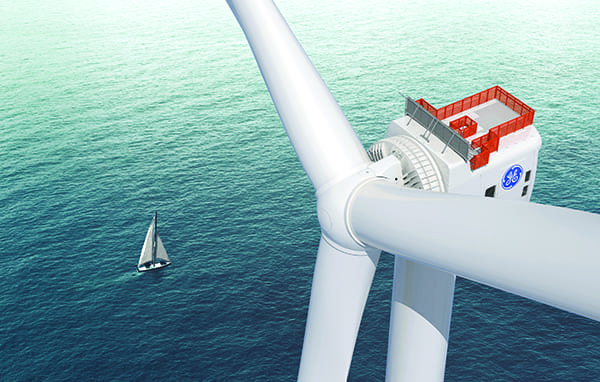Looking Ahead: It’s Time to Plan for and Build a Robust, Sustainable U.S.-led Recovery
The post Looking Ahead: It's Time to Plan for and Build a Robust, Sustainable U.S.-led Recovery appeared first on POWER Magazine.

While scientists and health professionals huddle with public officials to determine the best course forward to combat COVID-19 and relax social distancing, more of our leaders must address the need to quickly create high paying, sustainable jobs-lots of them.
COMMENTARY
Frankly, the need has never been greater. Regardless of political ideology, our politicians must put aside their differences and work with corporate and civic leaders to grow a stronger America. Fortunately, there are at least two essential infrastructure-building opportunities that can create much needed jobs and give America an edge in the modern economy: offshore wind development and public private partnerships (P3).
 Jocelyn Knoll
Jocelyn Knoll
Offshore electricity-generating wind farms and infrastructure-building P3s draw on public and private investments. These opportunities languished in our pre-COVID-19 U.S. economy.
But we no longer have the luxury of looking for ways to stall or put an end to these projects. Instead, offshore wind and the expansion of P3 offer our country badly needed solutions. Together, offshore wind and P3 projects go a long way toward meeting the nation's energy and other infrastructure needs, and perhaps even more important currently, provide hundreds of thousands of desperately needed high-paying jobs, including manufacturing jobs.
There are numerous offshore wind projects in development in the U.S., several of which are shovel-ready. The 800-MW $2.8 billion Vineyard Wind project, located about 15 miles off the Massachusetts coast, is ready to create thousands of jobs if the Trump administration would nudge the Bureau of Ocean Energy Management to remove regulatory hurdles.
It's no secret President Trump previously has indicated that he is no fan of offshore wind. But that was then and this is now. Instead of further delaying the Vineyard Wind permitting process to December 2020, when Congress' tax credits incentivizing these projects are currently set to expire, President Trump can-with a stroke of his executive pen-remove this bureaucratic-created logjam and approve the Vineyard Wind permit now.
And Congress can extend the tax credits that make these projects attractive to private investors. These actions in turn will clear the way for construction of the other 20-plus offshore wind projects in various development stages along the East Coast, including the South Fork Wind Farm, the Empire Wind and Sunrise Wind projects, all of which are located off the coast of a city that has been hit harder than any city in America, New York City, and the 1,100-MW Ocean Wind project in New Jersey.
The University of Delaware has estimated the development and construction of offshore wind farms in the U.S. holds out the realistic possibility of an almost $70 billion CAPEX revenue opportunity, available to businesses in the U.S. offshore wind supply chain by 2030. Together, the Empire Wind and Sunrise Wind projects are expected to bring more than 1,600 project-specific jobs, 16,746 ancillary jobs, and $3.2 billion in economic activity-and that's just for two projects.
Our leaders can move these offshore wind projects to fruition quickly. To do so, however, they need to remove the extra-imposed bureaucratic hurdles and extend the tax credits that will draw private investment in U.S.-based offshore wind projects. Adopting a five-year, 30% investment tax credit, as originally proposed last November by the House Ways & Means Committee, and extending the production tax credit that is scheduled to expire at the end of 2020, will encourage the development of a new industry that will lead economic growth, satisfy our future electricity needs, keep costs manageable for ratepayers, and avoid U.S. companies from cedingthe global offshore wind industry to the Europeans or Chinese.
Like offshore wind, P3 offers a means to construct badly needed infrastructure projects and generate tens of thousands of high-paying jobs, using private investment today. Many U.S. politicians have to date been reluctant to embrace the P3 delivery method because our public authorities can borrow a lot of money-through bonding-at low interest rates. However, it is a new day. With the recent increased volatility in the municipal markets and COVID-19 measures depleting governmental resources and debt capacity, and complicating access to markets, P3s are or will soon be more cost-competitive and necessary.
At a minimum, we need creative and realistic ways to grow our now-decimated economy without printing yet more money and taking on even more debt. To do so, our public officials need to partner with the private sector, using the P3 delivery method. Simply put, P3 projects offer a long-term approach to funding and procuring public works projects through transferring most of the financial, design, construction, operation, and maintenance risks to the private sector.
Other advantages to the P3 project delivery method include: delivering turnkey projects faster, keeping finance and project liabilities off-balance-sheet, shifting claim risk, and encouraging innovation. Most important, however, is that we should not overlook in these hard economic times that P3 projects provide a much-needed opportunity to create high-paying jobs building bridges, airports, schools, hospitals, government buildings, public transit projects, courthouses, roads and other projects, without our federal, state, and local governmental units currently adding to the recently created new mountain of debt.
Realistically, we must acknowledge that federal, state, and local public authorities lack the resources to continue to fund large stimulus packages without amassing debt that will likely saddle our country's growth prospects for the rest of this century. And we must recognize-and maybe even embrace-that there is an alternative way to fund critical infrastructure projects, using the P3 delivery method, so that we can reap the economic and tangible benefits they provide now.
To rebuild and grow a robust, sustainable U.S. economy, one that offers millions of now-unemployed workers-and our young people, including our newly minted college graduates-a better future, our leaders must think boldly and act quickly. Offshore wind and P3 projects present opportunities to move shovel-ready projects forward quickly. Both offer the prospect of returning much needed manufacturing to the United States. Both offer the opportunity to put now idled U.S. mine and steel workers back to work. And both offer the opportunity for our public officials to improve America and return value to their constituents.
-Jocelyn Knoll is a partner at the international law firm Dorsey & Whitney. She is chair of the firm's Construction and Design Practice Group, and Co-Chair of its Development and Infrastructure Industry Group.
The post Looking Ahead: It's Time to Plan for and Build a Robust, Sustainable U.S.-led Recovery appeared first on POWER Magazine.